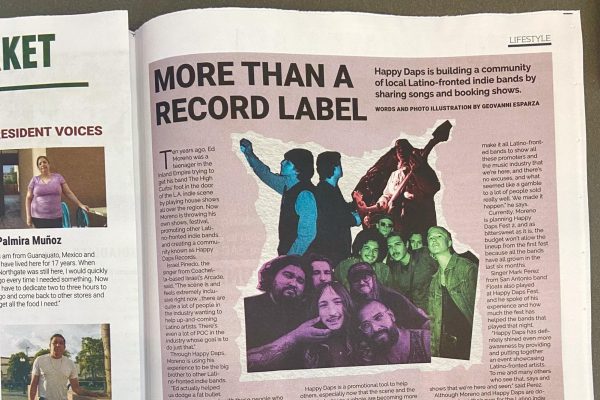Understanding “The Bern” and Tuition-Free College
Who wants free college? Wait, better question: Who doesn’t want free college?
I know I would certainly appreciate it, especially with Illinois’s current state of affairs concerning college tuition. The average cost of tuition at Illinois public colleges has risen from $2,538 in 1992 to $13,983 according to College Illinois. That’s not even taking into account private colleges like Columbia College Chicago or DePaul University, which can cost anywhere from $20,000 to well over $30,000 dollars in tuition before scholarships and financial aid.
This is almost certainly a major reason behind Sen. Bernie Sanders’s popularity among young voters. Since the beginning of his campaign, Sanders has touted his “Free College for All Act,” which proposes free public colleges and free or reduced student debt, according to his campaign website; This, as well as many of his other propositions, may have helped him secure a win in the Michigan primary recently, with a reported 81% of voters between the ages of 18 and 29 voting for Sanders.
Still, Sanders currently remains the only candidate in support of tuition-free college.
Let’s not get ahead of ourselves, though. On a local level, I’ve heard many students in the community express their enthusiasm for a tuition-free education. For what it’s worth, it doesn’t seem too out of reach; Tennessee’s “Tennessee Promise” has covered community college costs for students whose financial aid does not meet full tuition, and from what I’ve read it looks like it’s accomplishing its goals of providing affordable education.
What’s concerning to me is that despite understanding the hype behind free tuition based education, I fear that many of us students speak of this issue with little understanding of what Sanders’s plan actually entails.
I’ll be forward with you all: When I started researching senator Sanders and his “Free College for All” Act, I was unaware of what his plans were to accomplish such a goal. And I don’t seem to be the only one at Elgin Community College that’s afraid of students being left out of the loop.
“Some students are informed, but many aren’t,” said Dr. William Pelz, an ECC History and Political Science professor and Democratic Socialist. “I think that’s the fault of the media and our culture in general: They don’t really talk about it. I’ve had students say, ‘Oh, I’m for free college education but the taxes would kill me,’ but I say, ‘what made you think you’d be paying taxes?’ It’s not they disagreed with his plan, it’s that they really didn’t understand what it was.”
For those of you who are in the dark on what Sanders’s plan entails, here it is: The proposed “Free College for All” Act would, according to the candidate’s campaign website, “Make public colleges and universities tuition-free and substantially reduce student debt, in a plan that would cost about $75 billion a year… Paid for by imposing a tax on Wall Street speculators that would generate about $300 billion in revenue.”
So yes, while the plan does not seem to account for private colleges, it does still aim to reduce student debt overall. And according to ECC Political Science professor Chris Newman, the plan is feasible.
“A method of assessing the cost and benefit would be to draw a parallel with the costs of the Trouble Asset Relief Program that bailed out corporate America in 2008—2009,” said Newman in an email questionnaire, “Per ‘Activist Fiscal Policy’ Auerbach et al. Journal of Economic Perspectives Vol 24, No. 4 (Fall 2010) 141-163, the cost of that program was 5.5% of one year’s Gross Domestic Product. Google indicates that the United States GDP currently is $17.311 trillion. 5.5% of that figure would be roughly $95 billion, somewhat less than Sanders’s 2015 estimate of $70 billion. Thus the cost would be less than necessary to bail out the banks and corporation in 2008-2009.”
“It is certainly possible,” said Newman, “We as a nation have imposed more serious obligations on elements of the population in the past. The draft springs to mind, as does the various methods of financing WWI and WWII.”
Should Sanders be elected as our nation’s next president, it seems that the key obstacle in terms of passing the “Free College for All” Act will be those affected by the “Robin Hood” tax that would pay for it. That’s no small opposition, either; Sanders’s plan includes “investment houses, hedge funds, and other speculators” as part of those taxed, and there is not a doubt in my mind that they will put up a fight.
Who wants free college? Wait, better question: How will we, as a society, work to get free college?





